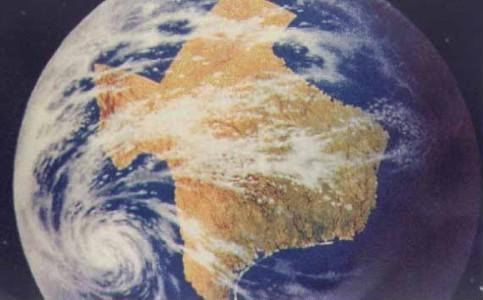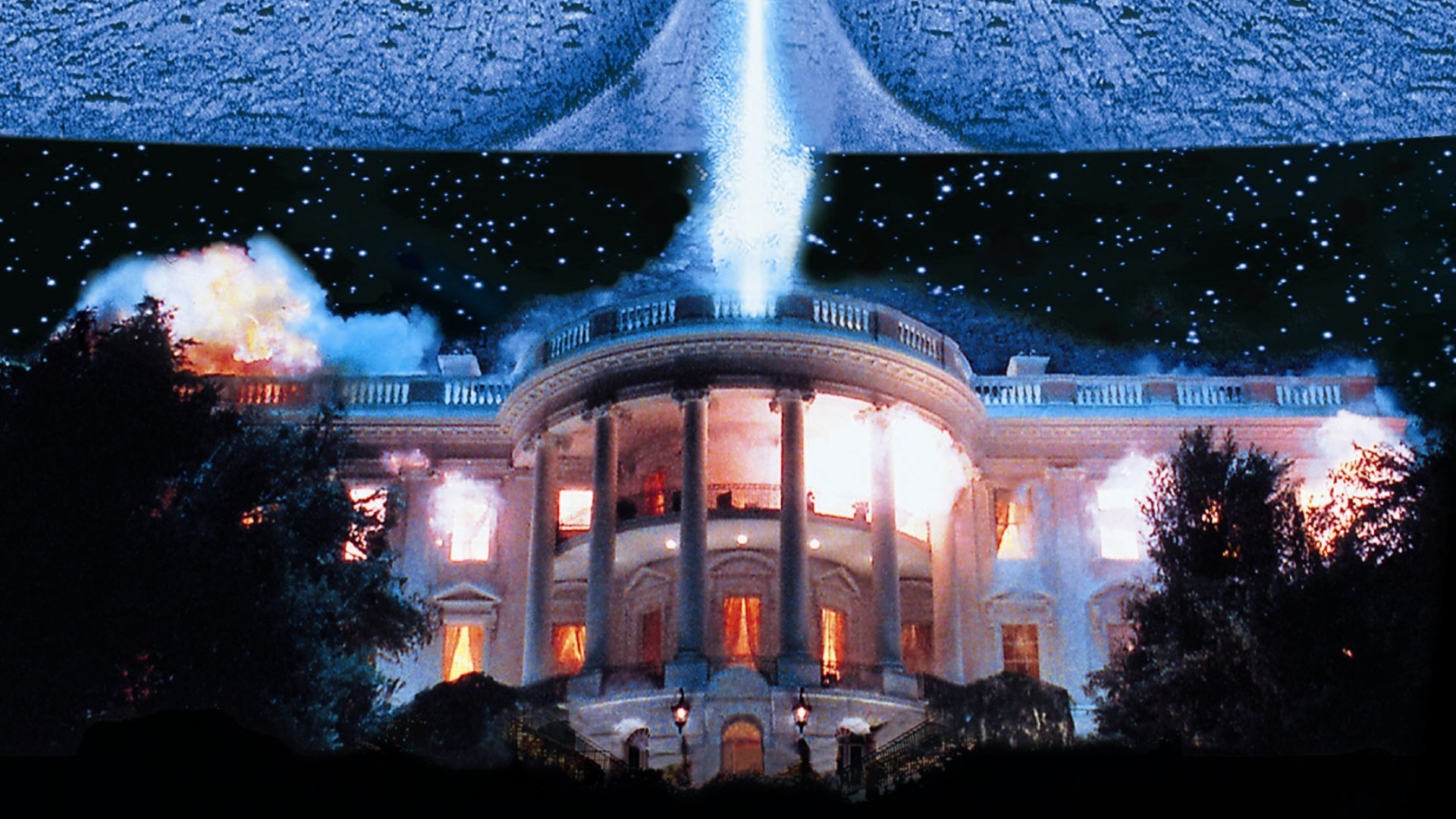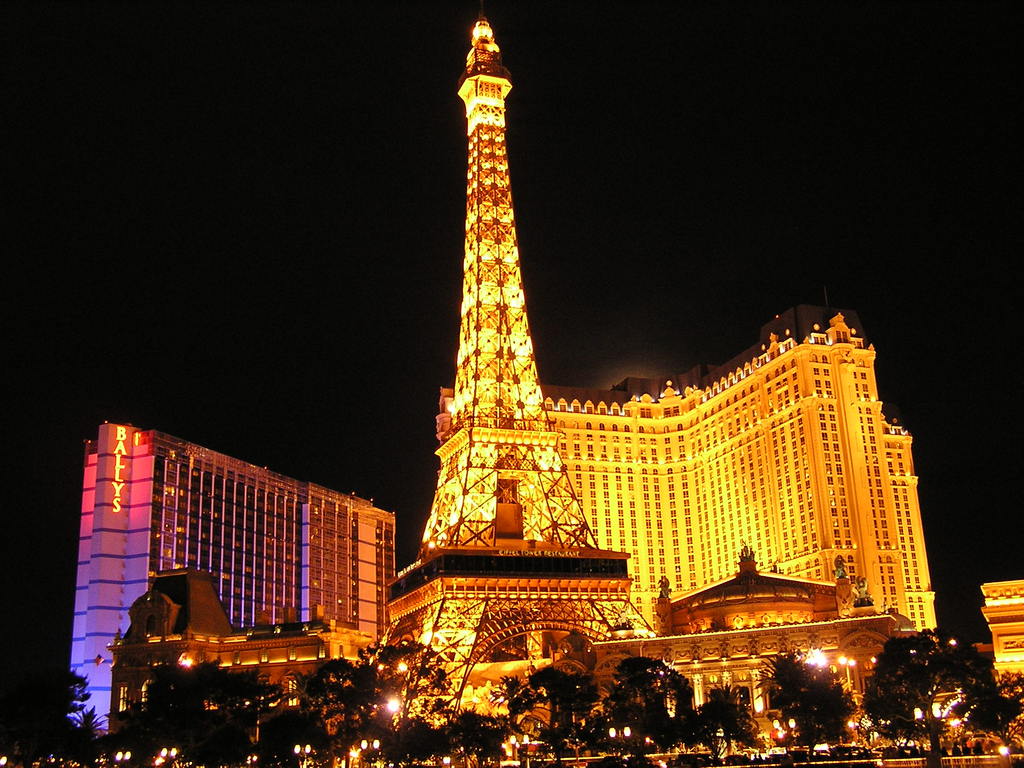TexasWorld!
Imagine a World in the State of Texas…
Notes from a talk given to the New York City Junto.
 To illustrate that the world is not in any meaningful way overpopulated, Julian Simon, author of The Ultimate Resource, noted that if everyone in the world
To illustrate that the world is not in any meaningful way overpopulated, Julian Simon, author of The Ultimate Resource, noted that if everyone in the world moved to Texas each person would still have about 1,800 square feet of living space. Enough room for a family of four to live in an average size house with a front and back yard.
Since Julian Simon made these calculations for his book The Ultimate Resource the world’s population has grown. I recalculated this with the estimated 2001 world population of 6 billion and in talks to high school students cited square-feet per-person at 1,500, which still leaves 6,000 square feet for a family of four (a still comfortable 60 by 100 foot lot).
But over the years in presentations to high school students, I have been peppered with objections and questions: “What about roads?” and what about parks, lakes, shopping malls, etc. Students ask practical questions. If I say everyone in the world could live in Texas, they want to know how.
 Why not take their questions seriously? The free-market system has an astonishing ability to respond to the unexpected, from everyday shifts in demand to hurricanes and other disasters. Imagine if everyone in the world woke up tomorrow and decided they wanted to live in Texas. Could markets coordinate the efforts and ingenuity of millions of entrepreneurs and businessmen in building the necessary infrastructure, homes, apartments, etc.?
Why not take their questions seriously? The free-market system has an astonishing ability to respond to the unexpected, from everyday shifts in demand to hurricanes and other disasters. Imagine if everyone in the world woke up tomorrow and decided they wanted to live in Texas. Could markets coordinate the efforts and ingenuity of millions of entrepreneurs and businessmen in building the necessary infrastructure, homes, apartments, etc.? Or what if aliens land and force everyone on Earth into Texas (perhaps after blowing up the White House as in the movie Independence Day). The aliens in Independence Day were pretty stupid. They expended enormous energy blowing up the world’s major cities. If they wanted earthlings out of the way in order to developing mining operations on Earth, they might have been better off moving the world’s cities to Texas.
Or what if aliens land and force everyone on Earth into Texas (perhaps after blowing up the White House as in the movie Independence Day). The aliens in Independence Day were pretty stupid. They expended enormous energy blowing up the world’s major cities. If they wanted earthlings out of the way in order to developing mining operations on Earth, they might have been better off moving the world’s cities to Texas.So, how could market forces allow humanity to adjust to such a forced relocation? This isn’t an entirely science fiction question. A meteor could strike the Earth and do a similar amount of damage.
An Atlantic Monthly cover story, “The Great Climate Flip-Flop” claimed a quick ice age could arrive, according to recent geological evidence (like this winter, only forever). The article claimed an Atlantic Ocean conveyer-belt moving warm water north and cold water south could be suddenly disrupted. Temperatures in Europe would drop dramatically, since Northern Europe is warmed by the Gulf Stream. In just a few years northern Europe would be too cold to grow food (which would, at least, save the European Union billions in farm subsidies). The article further claimed armies would be marching around to conquer farmland in the south. But markets could coordinate mankinds adjustment to a sudden ice age just as markets could coordinate adjusting to everyone in the world living in Texas.
An ice age would spur rapid adjustments around the world as farming various crops relocated to new regions. Food prices would rise initially which would be hard on poor countries and not such a big a deal for rich countries. In fact most of the poorest countries are in hot regions, and their climate for farming could improve.
When disasters strike, whether hurricanes, earthquakes, floods, droughts, or meteors, government response is to declare national emergencies, freeze prices, and sometimes suspend the rule of law: suspend the very market forces that provide the resiliency to respond to sudden and unexpected changes. Markets provide the information about relative scarcity and prices provide the incentives for millions or billions of people to coordinate their responses. F. A. Hayek’s great article “The Use of Knowledge in Society” uses a disaster to tell its story of the power of prices and market. It starts with a flood in a copper mine in Chile… (click here for article online).
So the importance of explaining how markets help society deal with emergencies is to help inoculate people against government “emergency measures” the next time a disaster strikes.
A separate reason why this kind of thought experiment is useful follows from the distortions caused by decades of interventionist immigration policies in America and around the world. When libertarians argue for open immigration and for the U.S. to remove immigration barriers, a difficult issue is the practical one of adjustment from the status quo to a free system. People respond to calls for ending U.S. immigration restrictions by saying that if we opened the borders now, millions of immigrants would flood in from Mexico and South America, and tens of millions might quickly travel here from China and India. How could markets handle that?
Well, that many wouldn’t “flood” in, but if they did markets would adjust, and most people, Americans as well as others around the world, would be better off for it. The point of economic analysis and population-oriented thought experiments is to illustrate why and how.
Another reason to spend time with futuristic scenarios is to promote understanding of the optimistic perspective on technology, on market economies and on people. Most of the problems people associate with “over” population or population growth are really problem caused by the lack of the rule of law, clearly defined property rights, and enforceable contracts.
Problems in New York City like high rents and a shortage of housing have their origin in long-standing rent controls, housing regulations, and other government interventions that restrict new housing. Traffic congestion and a creaky, cranky transit system is caused by government’s mismanaged monopoly roads and mass transit. So the main congestion problems of daily life in New York City would be solved with private property, enforceable contracts and open markets.
The problems of daily life in west Texas are not so easily solved. West Texas has lots empty land–empty of people. Even the cattle are lonely. Across tens of thousands of square miles of often beautiful scenery, are few cities and towns. West Texas cities like Lubbock, Amarillo, San Angelo and Midland are like oases in the desert.
Texas is a better place in 2010 with 25 million people than in 2000 with 21 million people, or 1980 with 14.2 million or 1960 with 9.6 million or 1900 with 3 million. I simply argue Texas would be a better place still in 2015 with 6 billion people living free and living large.
Moving to Texas
 Aix-en-Provence in the south of France is a beautiful place. I’ve had the pleasure of visiting there for talks the Summer University and Institute for Economic Studies-Europe seminars for college students. The city is beautiful and densely populated. Narrow cobblestone roads run between six- to eight-story apartment buildings, most with shops on street level. The main street through town, a marvelous wide boulevard feature fountains and endless cafes. If I were building a housing development and tourist attraction in Texas I would invite thousands of stone masons and other construction workers to build this part of paradise in a freer state in a for-now freer country.
Aix-en-Provence in the south of France is a beautiful place. I’ve had the pleasure of visiting there for talks the Summer University and Institute for Economic Studies-Europe seminars for college students. The city is beautiful and densely populated. Narrow cobblestone roads run between six- to eight-story apartment buildings, most with shops on street level. The main street through town, a marvelous wide boulevard feature fountains and endless cafes. If I were building a housing development and tourist attraction in Texas I would invite thousands of stone masons and other construction workers to build this part of paradise in a freer state in a for-now freer country.Imagine a new governor of Texas was a very ambitious man. Imagine him not satisfied with being governor of Texas but with visions of being Governor of the World! He has limited powers as Governor, but his reach is further limited since so many of the world people don’t even live in Texas.
If he were to appoint me his advisor, I could help him govern the world. What would most attract the world’s people to Texas? Freedom. In Texas, freedom is a stronger tradition than in most of the country. For one thing the federal government owns very little land in Texas, unlike the rest of the country and especially the west were the federal government owns 50% of the land. Texas came into the union as a sovereign state, so most land stayed or became private property.
I would advise the new governor of Texas to visit Las Vegas. Have you been there lately? It is not just a place for gambling. It is becoming a place for tourists as well. Perhaps Las Vegas looked at a map of the U.S. twenty years ago, noticed many Indian reservations, and expected stiff competition for future gamblers.
But Las Vegas seems like an odd place for a tourist destination, unless you have never seen a desert before. The nearby mountains are beautiful at sunrise and sunset. But like Aix-en-Provence, the tourist attraction is not the countryside, it is the city and it’s buildings and shops and boulevards and people.
Las Vegas now has buildings and shops and boulevards to attract tourists. You can visit Venice, Paris, New York, Ancient Egypt and Rome. In the Venetian you can ride in a gondola to the piazza and sit “outside” in the cool midday air sipping cappuccino. P.J. O’Rourke says it has everything Venice does, except the stink.
 The Paris Casino has a mini-Eiffel Tower great breads from French pastry shops and buffets of fine French foods. Many of the workers are from french-speaking Romania however, so lack the skill of delivering an authentic French insult.
The Paris Casino has a mini-Eiffel Tower great breads from French pastry shops and buffets of fine French foods. Many of the workers are from french-speaking Romania however, so lack the skill of delivering an authentic French insult.So I would try to impress upon the Governor of Texas the brilliance of this strategy of inviting the world’s great cities to Texas.
First we would have to assure investors that Texas would have the population to fill millions, even billions of new homes and apartments. And for that Texas could apply, as Iowa has, for a waiver from federal immigration restrictions. Iowa’s population dropped nearly 5% from 1980 to 1990. Restrictive immigration policies have contributed to the reduced population in hundreds of midwestern cities and towns. So Iowa and many other less-populated cities, including many in update New York are trying to attract more immigrants.
In Texas we would need hundreds of billions of dollars in housing construction and infrastructure in order to accommodate billions of new immigrants. The good news is that there are hundreds of millions of really poor people in the world who are looking for work. They don’t know it maybe, but they are really looking for freedom, and looking for freedom to work in all the wrong places. They should look in Texas. They should have cards that read “Have Poverty; Will Travel.”
 So new Texas World cities could be constructed with world labor. Texas is a big enough place, and with enough coastline, I would recommend establishing Charter Cities and Startup Cities along the Texas coast. New port city to compete with Galveston and Houston. The new charters could be based on those that have worked so well for Hong Kong and Singapore, still among the freest city in the world. Let Hong Kong investors finance this new city and port. And they could easily find millions of people to begin construction. In fact, construction could be financed in part by the impoverished chinese immigrants themselves. In 2000 the going rate for getting to New York illegally from China was around $40,000. Offer Texas citizenship to anyone investing $40,000 in this new Hong Kong, Texas. Ten million Chinese immigrants would bring 400 billion investment dollars to Texas. That should be enough to get things started.
So new Texas World cities could be constructed with world labor. Texas is a big enough place, and with enough coastline, I would recommend establishing Charter Cities and Startup Cities along the Texas coast. New port city to compete with Galveston and Houston. The new charters could be based on those that have worked so well for Hong Kong and Singapore, still among the freest city in the world. Let Hong Kong investors finance this new city and port. And they could easily find millions of people to begin construction. In fact, construction could be financed in part by the impoverished chinese immigrants themselves. In 2000 the going rate for getting to New York illegally from China was around $40,000. Offer Texas citizenship to anyone investing $40,000 in this new Hong Kong, Texas. Ten million Chinese immigrants would bring 400 billion investment dollars to Texas. That should be enough to get things started.Of course, most impoverished Chinese people don’t have $40,000. They borrow it confident they will be able to find work in New York City and other thriving U.S. cities, save enough in a few years to pay back their transport creditors.
In and around new Texas Startup Cities would be factories and farms providing jobs and food. Elsewhere in Texas would be New Bombay and New New Delhi, maybe along new hi-tech corridors like I-35 between Austin and San Antonio. Millions of highly educated and English-speaking people from India would bring inexpensive programming skills as well as hundreds of other skills to Texas (while their parents run the motels).
 Americans have long liked to believe they are a special people, somehow uniquely capable and deserving of the stunning wealth created and enjoyed in America. But it is liberty that is unique to America and the western world of the last couple hundred years. Rose Wilder Lane tries to describe this astonishing force of nature, the power of free people in the beginning of her book, The Discovery of Freedom:
Americans have long liked to believe they are a special people, somehow uniquely capable and deserving of the stunning wealth created and enjoyed in America. But it is liberty that is unique to America and the western world of the last couple hundred years. Rose Wilder Lane tries to describe this astonishing force of nature, the power of free people in the beginning of her book, The Discovery of Freedom:Opportunity Cost
One of the interesting things about Texasworld is the boost in worldwide growth rates that Texas freedom could ignite. Academics and comentators get excited when they average growth rates in China of 7% or 8%. But every Chinese immigrant to the U.S. enjoys an individual economic growth rate of maybe 1000% the first year: from $100 a month income to $1,000 and then maybe another 100% the second year to $2,000 a month.
Chinese people moving to the U.S. can be a more effective a way to boost prosperity and economic development than shipping capital to China.
Perhaps the greatest loss of human prosperity over the sixty years was the billion Chinese locked up in China under communist rule. How many billions of hours of creative human endeavor were lost? How many hundreds of millions of lifetimes of business acheivement and entrepreneurship lost? How many tens of millions of lifetimes stolen from engineering development, medical research and scientific discovery? We should reflect not only on how miserably these billion plus Chinese people have lived under Communist rule but also how much the world lost when these minds and bodies were mostly isolated from the world.
China could have easily followed the course of Singapore in 1950. The president of Singapore was also a communist, but he inadvertantly deregulated the Singapore economy and discovered the benefits of markets. Chinese in China could have had the same per capita income as Chinese in Singapore, Hong Kong and Taiwan.
This gives us a sense of what would result from liberating hundreds of millions of Chinese not over the next decades as China hopefully liberalizes, but over next two or three years with entrepreneurial Chinese people living free in Texas. The first generation of hard labor and long hours can offer their children (plural!) advanced educations as engineers, research scientists and entrepreneurs. (Everyone time I chatted with workers in Chinese restaurants when I lived in Houston, they were working on engineering degrees at area colleges.)
My Texasworld presentation outlined these and other preliminary ideas on market responses to possible global emergencies, and looked at the technologies for growing food and producing energy for vastly high population densities, in Texas, in New York or on the Earth in general.
